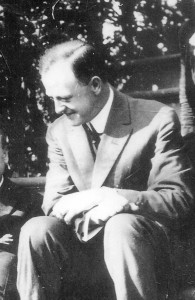(From the San Anselmo Historical Society Newsletter, Spring 2007)
The San Francisco earthquake and fire in 1906 brought an influx of residents to San Anselmo who built permanent homes, planted trees along the hot dusty streets and began to think of incorporation. From a mere 161 individuals in 1900, the population of San Anselmo grew to 985 by January 1907.
The issues surrounding the incorporation of the town were threefold: the threat of annexation by San Rafael, taxes, and the control of alcohol sales. The Greater San Rafael Committee had proposed that the people of San Anselmo and Ross be incorporated with San Rafael in order to reduce the cost of government.
Many residents were fearful that annexation by San Rafael would mean the spread of saloons into their community. San Anselmo had always been “dry,” and the Marin
County Board of Supervisors repeatedly denied saloon licenses in town. It is no surprise that the Presbyterian Orphanage and the San Francisco Theological Seminary protested against the granting of liquor licenses. However, if you knew where to go and what to say, you could get an alcoholic drink at one of the few “blind pigs” in town.
Spirited arguments were presented by both sides in the incorporation debate. Those against argued that the tax rate would increase to support the new town government, saloons would be granted licenses and poolrooms would be allowed. Proponents argued that ordinances would be put in place to prohibit saloons and poolrooms, and that good roads and street lighting would be provided.
Fifty-six residents of the area petitioned the Board of Supervisors for permission to hold an election on the issue of incorporation. A map of the proposed town boundaries was presented. In March, the Board of Supervisors, after a lively discussion and appeals from property owners about the boundaries, fixed the town boundaries and set the election date.
The election was held on Saturday, March 30, 1907. The single polling place was McLaren’s Livery Stable at the corner of Ross and San Anselmo Avenues.
The vote was very close – 83 for and 79 against. Absent among the voters were all the women of the community, since women were not allowed to vote in California until the election of 1912.
Frederick J. Crisp, W. Ernest Jones, Douglas Lindsey, William J. Raubinger and James I. Taylor were elected to the first Board of Trustees, as the Town Council was called in those days. They met on April 11th and set about establishing town ordinances. Within two months, ordinances were established to set fines for depositing garbage on the streets, to ban the sale of liquor and to set fines for picking up stray horses, cows, pigs, goats and sheep. Such was the nature of the early business of town government.
First Town Council Members
Frederick J. Crisp was 25 years old, unmarried, and living with his mother on Ross Avenue at the time of the election. He was born in Australia and had been in San Anselmo since 1892. In 1906, Fred passed his law examinations and was admitted to the practice of law. He served on the Board of Trustees until 1910, then again from 1912 to 1916.
Ernest Jones was 32 years old when elected to the Board of Trustees. He and his wife had a summer home in San Anselmo and moved permanently to the Barber Tract after the 1906 earthquake. He was born in Contra Costa County to Welsh immigrant parents. Jones owned a drayage company in San Francisco. He was elected chairman (mayor) of the board at its first meeting. He served as trustee and chairman until 1912.
Douglas Lindsey, age 34, was born and raised on a farm in Illinois. He was a building engineer. After serving 8 months on the board, he resigned when he accepted a new engineering position and moved with his family to San Francisco. William J. Raubinger was 36 years old when he was elected as a trustee. He was born in San Francisco to German immigrant parents. He served 1½ years as a trustee. He was the proprietor of a drayage company in San Francisco. Raubinger lived at 46 San Rafael Avenue.
James I. Taylor, son of Samuel P. Taylor and Sarah Irving, was 51 years old when he was elected as a town trustee. Like his father, he was a paper merchant. Jim Taylor was elected to the State Assembly in 1893 representing Marin County in the 30th Legislative Session. He and his family lived at 206 Saunders. He served one year as a trustee.



